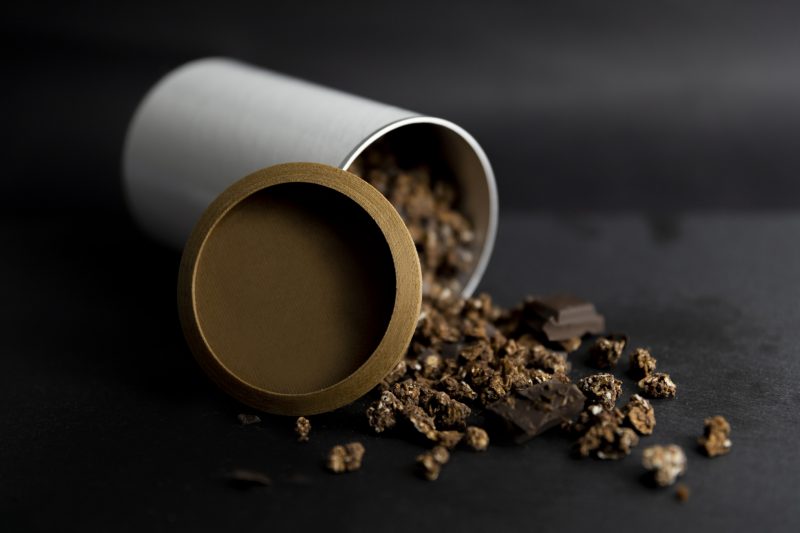

Wooden closures for paper tubes – How the popular food packaging becomes a rounded concept
Food packaging is indispensable for the prevention of food waste. In our plastic-focused economy, most food packaging is still mainly petroleum-based
To give an impression, manufacturers in Europe produce 23 million tonnes of plastic packaging each year. After a short and single usage, food packaging ends up as waste. Around one-third of the packaging inevitably ends up in our environment, polluting groundwater and oceans. Despite rising growth figures, experts say the packaging industry is in a state of flux. With the increase in packaging consumption, the environmental impact of food packaging has become a significant concern for consumers worldwide.
In a consumer survey by the Institute for Ecological Economy Research in Germany, eight out of ten respondents stated that the use of sustainable packaging materials is of great importance to them. Above all, these growing demands of consumers concerning sustainability are leading food manufacturers to rethink their packaging materials.
Kellogg’s set an example with its iconic Pringles tube packaging. Such a round carton can set itself apart from conventional pouch packaging in terms of quality and appeal, especially for dry food products. Kellogg’s proves how well this works in terms of sales. In Europe alone, three million cans of potato crisps cross the counter every day.
The problem here: environmentalists criticize that the packaging is practically non-recyclable. The bottom is metal, the closure made of plastic with a foiled cardboard tube. The British Recycling Association even named the can a “recycling nightmare.” Kellogg’s saw the need for action and gave its packaging concept a sustainable facelift, now being tested in the British supermarket chain Tesco. The new packaging consists of “only” a 10% polyol barrier intended to protect the contents from oxygen and moisture. Simon Ellin of the Recycling Association stressed: “If you stay with the plastic lid, it’s only going to increase plastic pollution […] The plastic lid has got to go.”
To solve the problems associated with petroleum-based packaging and round off the packaging concept, the paper tube requires a closure that is in no way inferior to the can when looking at ecology. It requires a material that does not compromise on sustainability and at the same time meets the high-quality demands of paper tube packaging.
Wood-plastic composites, also called WPC, are a group of materials that combine natural wood fibers with plastics. These materials use the raw material wood, which is obtained in large quantities as a residual product and thus complements the material in an economically advantageous way. By supplementing the wood with the bioplastic PLA, which is 100% biobased and biodegradable, this material can unfold its full potential in terms of sustainability.
This material can be processed into thin-walled products such as paper tube closures using injection molding technology. The combination of a paper tube with wooden closures not only complements the concept of a holistically designed tube packaging for dry food in terms of an aesthetic appearance. It also visibly communicates the sustainability desired by today’s customers.
About the author
Jonas Wurster, Business Development Manager at rezemo GmbH
With forewood, the rezemo GmbH has developed an innovative material group based on natural wood fibers. In Germany, the company develops sustainable and 100% bio-based packaging products for the FCMG sector.
For more information, please visit https://forewood.de/





